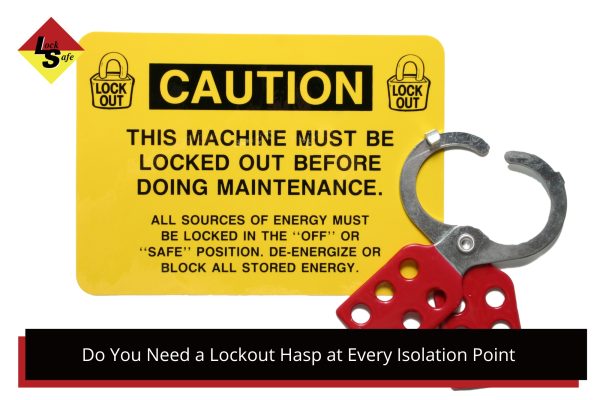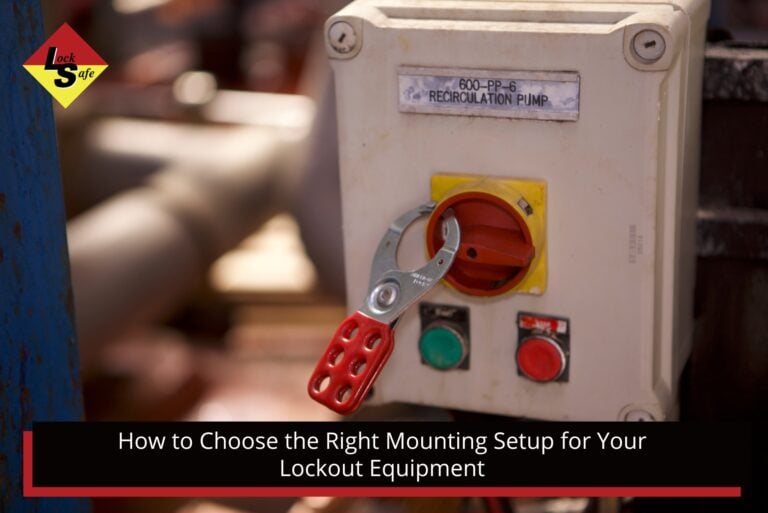Lockout/tagout (LOTO) procedures are fundamental to workplace safety, especially during maintenance and repair of machinery. One of the most common questions safety managers and maintenance teams face is:
“Do you need a lockout hasp at every isolation point?”
The answer depends on the setup of your energy sources and the structure of your maintenance team.
When Is a Lockout Hasp Essential?
A lockout hasp is a device that allows multiple workers to attach their personal padlocks to a single isolation point, ensuring that equipment cannot be re-energised until every individual has removed their lock. This is crucial for group lockouts, where more than one person is working on the same equipment or system.
You should use a lockout hasp at an isolation point if:
- Multiple workers need to isolate the same energy source at the same time.
- The isolation point controls a hazardous energy source that could endanger more than one person during maintenance or servicing.
- Your team structure requires individual accountability; each worker must be able to secure their own lock and remove it only when their work is finished.
In these scenarios, a lockout hasp provides a central locking location. Each worker attaches their padlock, and the equipment cannot be operated until all padlocks are removed, ensuring no one is exposed to unexpected energisation.

Single Worker or Simple Energy Source
If only one person is working on a piece of equipment and there is a single energy isolation point, a lockout hasp is not strictly necessary. The worker can apply their personal lock directly to the isolation device. However, if there’s any chance that other workers may join the task or if shift changes are common, a hasp is recommended to maintain safety and compliance.
Multiple Isolation Points
For systems with multiple energy sources (e.g., electrical, hydraulic, pneumatic), each isolation point must be locked out. In group lockout situations, a hasp should be used at each point where multiple workers need to secure their own locks. Alternatively, a group lockbox system can be used, where keys to individual locks are secured in a box, and each worker locks the box with their padlock.
Choosing the Right Lockout Hasp
Lockout hasps come in various materials and sizes to suit different isolation points—scissor-type, tamper-proof, heavy-duty, and non-conductive options are available to match your site’s requirements. Always select a hasp that fits securely on the isolation device and accommodates the number of locks needed for your team.

What are the Risks of Not Using a Lockout Hasp At Each Isolation Point
Failing to use a lockout hasp at each isolation point where required exposes workers to serious hazards, increases the chance of accidental machine start-up, and can lead to regulatory breaches.
- Accidental Re-energisation and Serious Injury
- Inadequate Personal Control
- Lack of Visual Indication
- Non-compliance with Safety Regulations
- Confusion During Shift Changes
- Reduced Team Accountability
For group isolation, always use a lockout hasp or a compliant alternative to ensure every worker can secure their own lock, providing maximum protection and compliance with safety standards.
Explore Lockout Hasps for Every Application
For a comprehensive range of safety-compliant lockout hasps, including scissor, tamper-proof, and custom options, click here.
Contact Locksafe for Expert Advice on Lockout Hasps
Have questions about lockout hasps or need help choosing the right solution for your facility’s energy isolation points?
The Locksafe team is ready to assist with expert guidance and a comprehensive range of safety-compliant products, including custom solutions to suit your specific requirements.
Reach out today for personalised advice, product recommendations, or to discuss your site’s lockout needs.
For more information or to submit an enquiry, visit: locksafe.com.au/contact/













